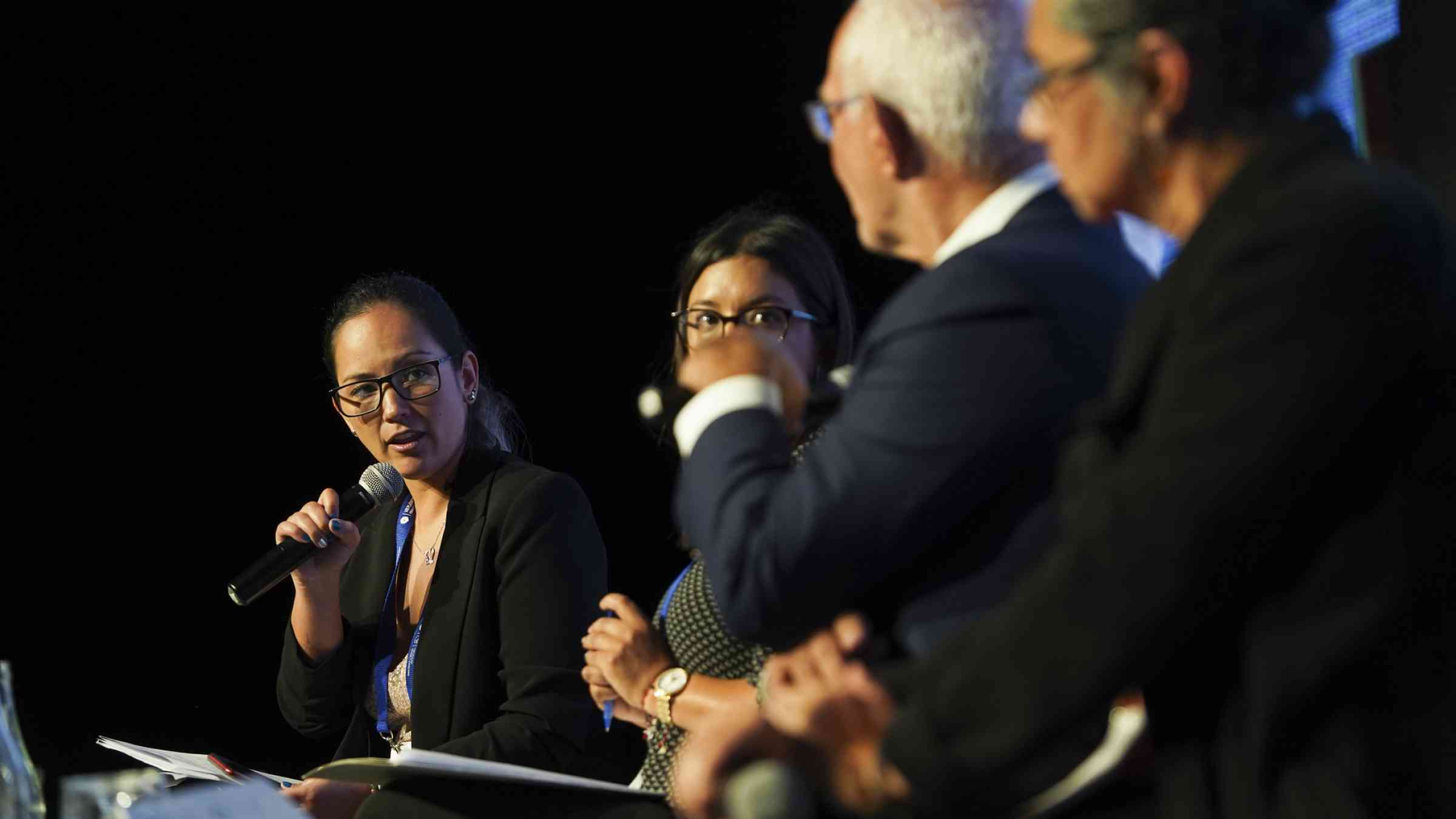Inclusive and sustainable disaster risk reduction efforts feed on science and technology, experts say

Science and technology are critical to developing equitable and sustainable disaster risk reduction across the Americas and the Caribbean, attendees of the VIII Regional Platform for Disaster Risk Reduction in the Americas and the Caribbean (RP23) were told.
Last year, the United Nations set the goal that every person on Earth be protected by early warning systems by 2027.
Attendees learned that communicating scientific knowledge and improving technology is critical to achieving this goal. However, plenty of challenges must be overcome for that to come to fruition.
“The true challenge lies in the fact we do not have human or financial resources that are sufficient for putting this into practice,” said Mami Mizutori, the United Nations Special Representative of the Secretary-General for Disaster Risk Reduction.
To that end, Uruguayan Vice President Beatriz Argimón emphasized the importance of budgeting for disaster risk reduction, including for science and technology programs.
While planning for disasters may not always be front of mind for politicians, Argimón said the role of scientists must be to communicate these needs effectively and clearly lay out the kind of financial resources necessary to achieve them.
“Obviously, we all know how important science and technology are in our lives, but many times, when actions are taken, particularly for national budgets, sometimes that balance is not taken into account,” she said.
Argimón urged politicians to exercise their agency in these matters and be proactive about taking preventative measures and developing and communicating frameworks to mitigate the impacts of disasters.
“Every decision and action we take makes us more vulnerable to disasters, or on the contrary, more resilient,” she said.
In support of the vice president’s argument, Mona Nemer, Canada’s Chief Science Advisor, told RP23 attendees that science and technology can be used in risk identification and early warning systems.
“Effective disaster preparedness requires risk identification, robust early warning systems and plans for efficient public communication,” she said. “Science and technology are key to gathering [data] and analysis, including monitoring geospatial data using remote-sensing technologies, climate change impacts and forecasting risks.”
To this end, she added that governments, civil society organizations and private entities can work together to share information.
Gladys Lorena Terrazas Arnez, President of the civil organization Red Paz, Integracion y Desarrollo, added that all types of knowledge must be used in the development of early warning systems, especially indigenous knowledge.
“We need to listen to each other among the different sectors, so this knowledge is recognized and escalated,” she said.
The issue of representation and inclusion in disaster risk reduction across the Americas and the Caribbean was also discussed in depth.
Mizutori pointed out the first two panels of the day were composed entirely of women and emphasized the need for gender parity in disaster risk reduction and rebuilding organizations.
“Women are taking leadership roles in so many different ways,” she said, including as leading scientists, the heads of civil society organizations and in politics.
However, the panelists added that women are not a monolithic group, and more work needs to be done quantifying and addressing the gender disparities in disaster risk reduction disciplines in individual countries and regions.
For example, the panelists emphasized the importance of women in academics and research, especially in the fields of engineering and artificial intelligence.
There was broad agreement that the best way to do this is for more women role models to matriculate to positions of power in their local communities.
Along with working towards gender parity and implementing scientific and technological solutions in disaster risk reduction, RP23 attendees were told about the importance of sustainable finance and development.
Andrew Maskrey, an urban planner and Coordinating Lead Author of the Coalition for Disaster Resilient Infrastructure’s Flagship Report on Disaster and Climate Resilient Infrastructure, said there is not enough funding available for the recovery of infrastructure damaged by disasters and the investment in future infrastructure.
This led to the question of where future funds will come from to boost resilience and continue rebuilding affected countries. “This will require private sector investment,” Maskrey said.
While there are plenty of societal benefits to investing in resilience, including reduced losses and damages and reduced costs in terms of the disruption of services, there is no return on these investments.
“The fact is no one wants to invest without private returns,” Maskrey said. “The heart of the problem is to develop financing instruments and mechanisms, so part of the benefits from resilience return to the private investors.”
The first day of the three-day event concluded with a mid-term review of the implementation of the Sendai Framework and Regional Action Plan and reports from each of the member countries updating the session on their progress.
The key messages from the mid-term review were that governments and stakeholders must treat disaster risk reduction as an outcome instead of a sector and establish clear risk governance arrangements. Additionally, the review recognized that aspects of the financial system, macroeconomics and climate and development finance contribute to the creation of disaster risk.
The mid-term review also assessed the status of the targets of the Sendai Framework, finding that most indicators were worse than they should be.
These include an increase in the number of people affected by disasters, direct economic losses from disasters and damage to infrastructure. International cooperation and availability of and access to early warning systems were also lower than expected.
Still, the mid-term review found that the implementation of the Sendai Framework was succeeding in its goals of reducing mortality and increasing the number of national and local strategies.
“We have been encouraged by the enthusiasm and uptake at that highest level, and I encourage other member states and stakeholders to participate,” said Marc Gordon, the Lead Coordinator of the Midterm Review of the Sendai Framework at the United Nations.